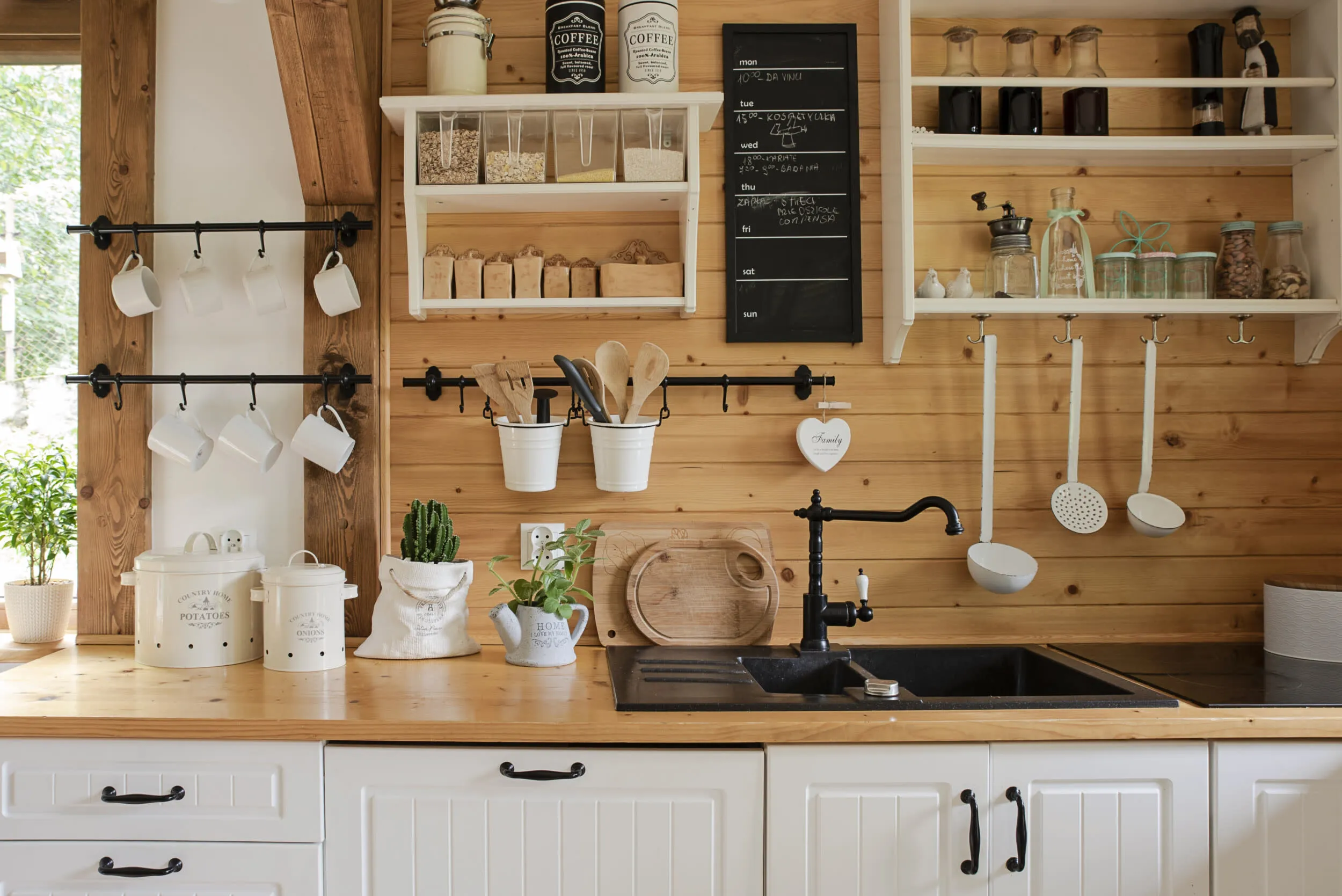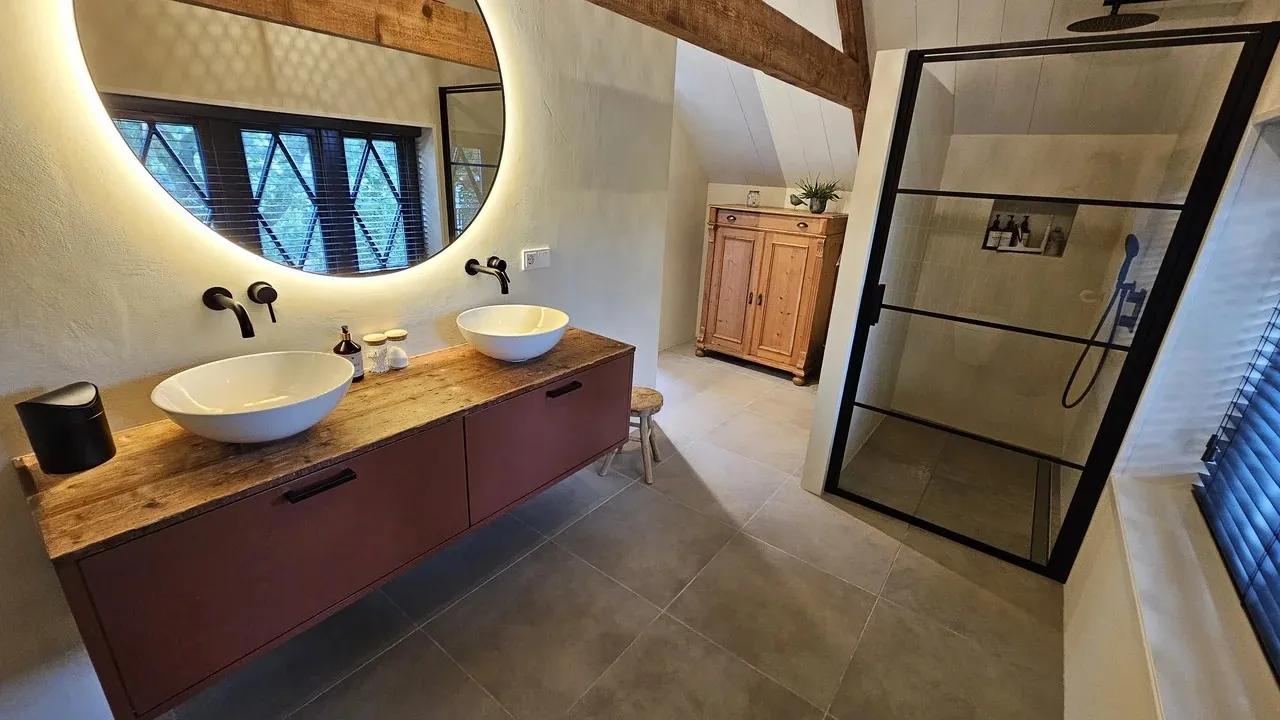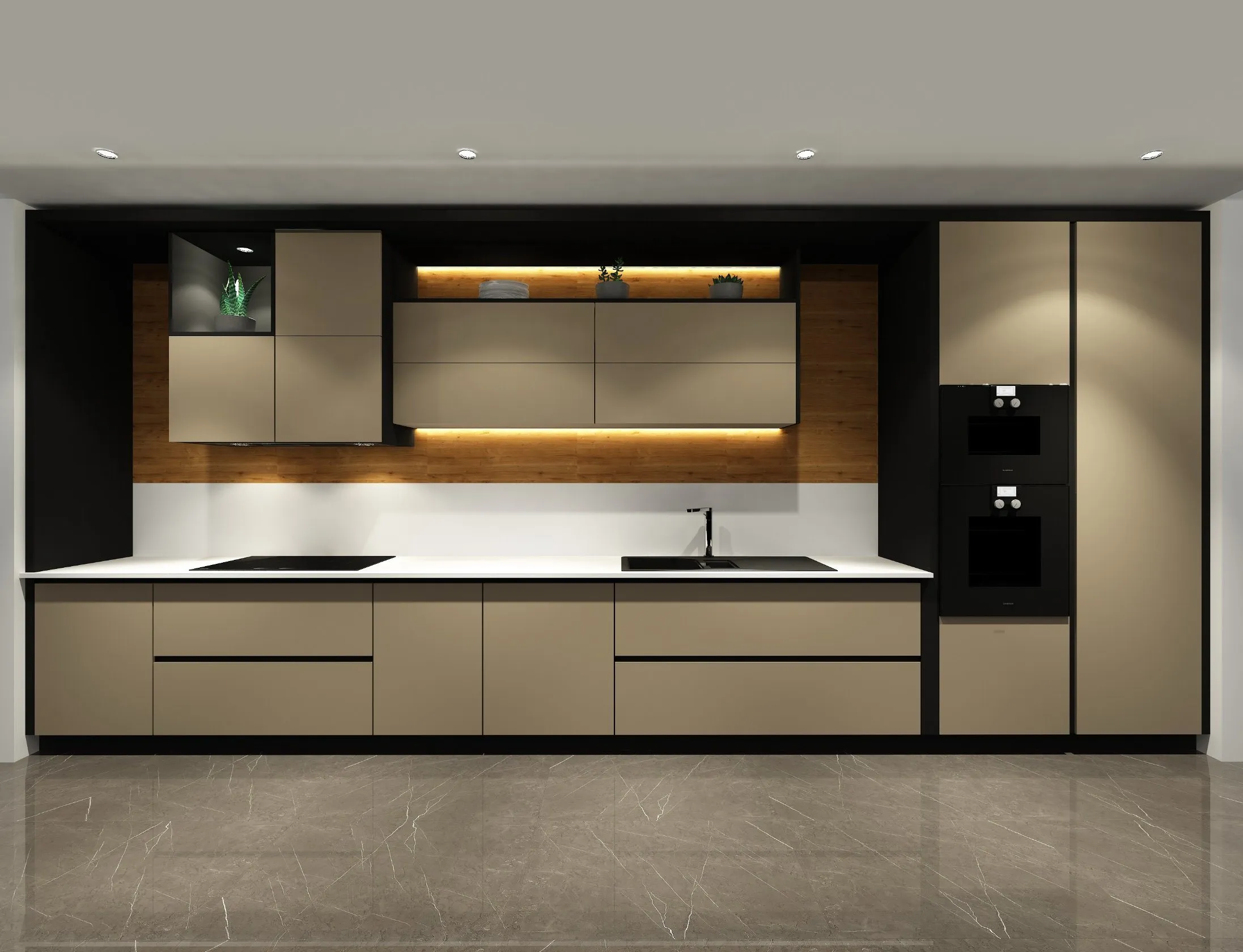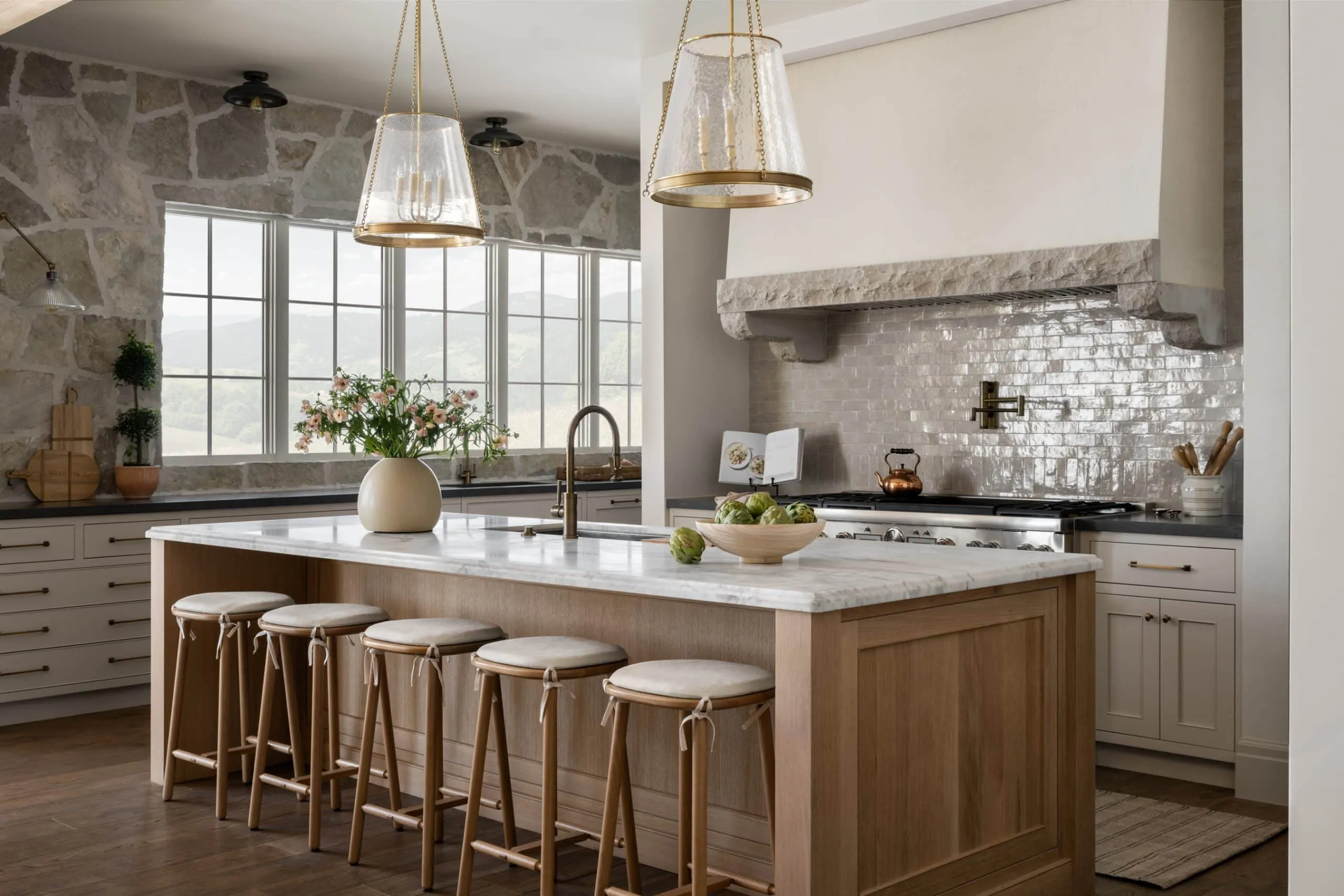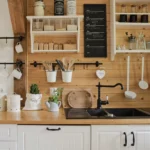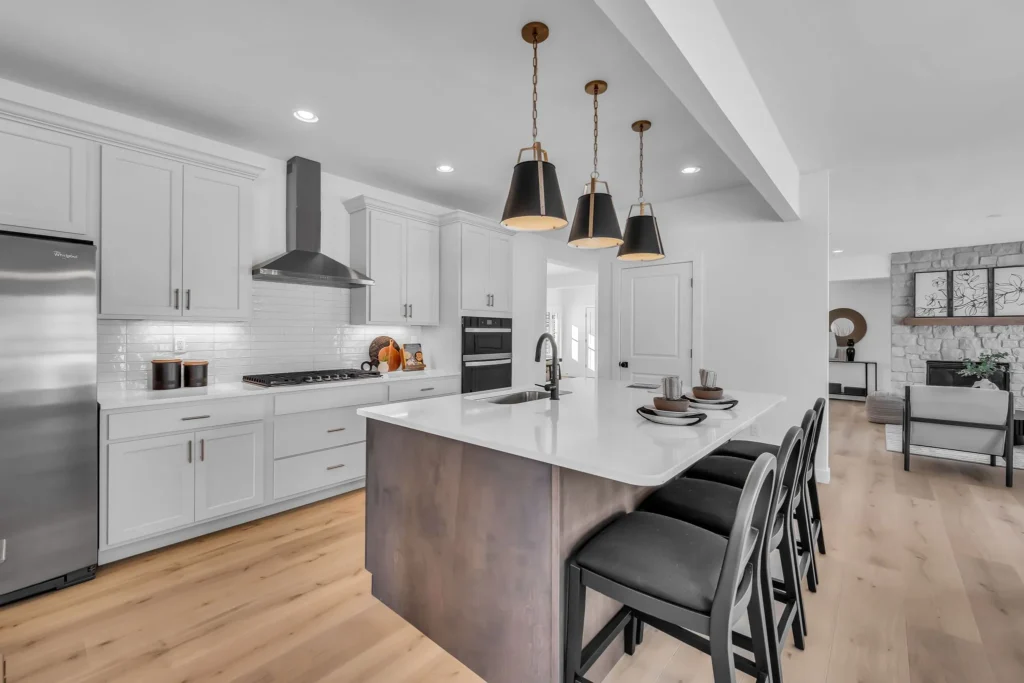
A kitchen island is often the dream upgrade, but costs can surprise you. Hidden fees and material choices make planning stressful without a clear guide.
Our one-stop service helps global homeowners and professionals with sourcing from Foshan, China. We provide kitchens, wardrobes, baths, tiles, lights, floors, and more in one package. From 3D interior layouts to export logistics, we simplify full-house projects with coordinated design and reliable delivery.
The average cost of a kitchen island in 2025 ranges from $900 to over $20,000. Prefab units are cheaper, and a custom kitchen island with appliances or premium materials costs much more. Key factors include size, materials, labor, and extra features.
Costs vary widely, so you need more than just averages. Let’s break down real price drivers and help you decide which type fits your budget.
What is the average cost of a kitchen island in 2025?
The average cost of a kitchen island in 2025 is between $900 and $6,500, depending on type and features. A custom kitchen island can reach $10,000 or more.
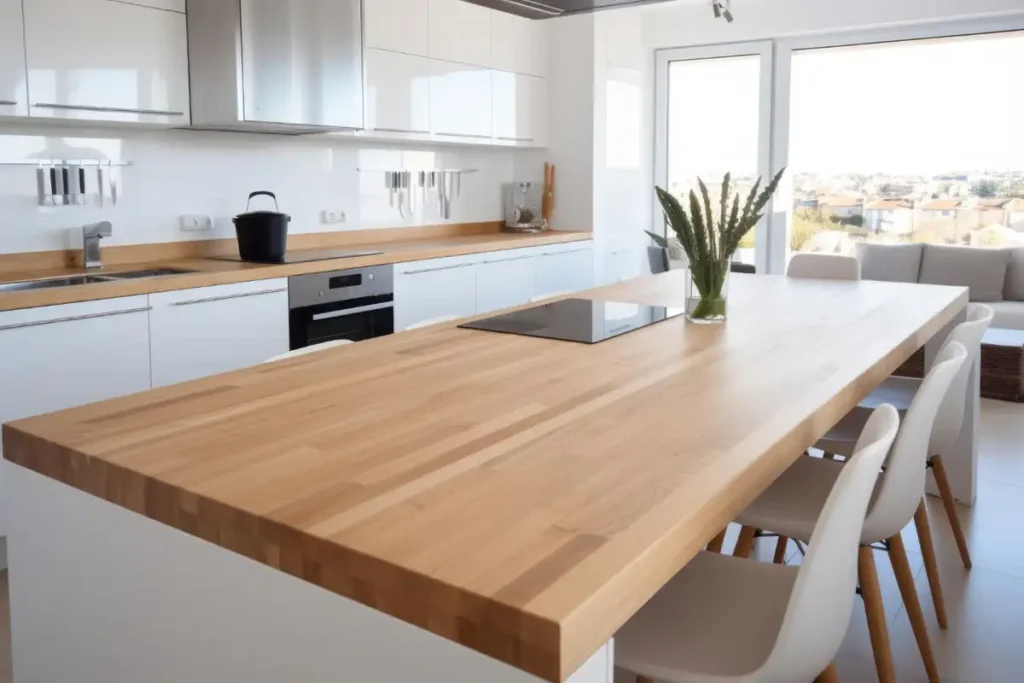
The price range for a kitchen island in 2025 is wide because there are many ways to build or buy one. A small rolling cart can cost under $500. A large custom kitchen island with granite or quartz countertops and built-in appliances can go well over $15,000. The gap exists because of three big drivers: size, material, and features.
Size and Scale
A small 4×2 foot island without plumbing is affordable. Larger islands, often 8 feet or more with seating and storage, need more materials and labor. Bigger size means more countertop square footage, more cabinetry, and sometimes more reinforcement under the floor.
Type of Island
Prefab models are the cheapest. They are limited in style but work for most kitchens. Semi-custom islands allow some choices in finish and layout. Fully custom islands are the most expensive, but they match the space perfectly.
Materials and Finishes
Laminate and butcher block are budget friendly. Granite, quartz, and marble are more costly. Each option has different durability and looks. Granite offers strength and a premium style but is harder to install.
Features and Upgrades
Add-ons like sinks, dishwashers, and wine fridges raise costs. These also bring plumbing and electrical expenses. Even small things like outlets or pendant lighting can add hundreds of dollars.
Labor is another cost. Basic assembly can be DIY, but custom work needs skilled contractors. Rates vary by location, with large cities often charging more.
How much does a prefab kitchen island cost?
Prefab kitchen islands usually cost between $800 and $2,500, with simple rolling carts starting around $150.
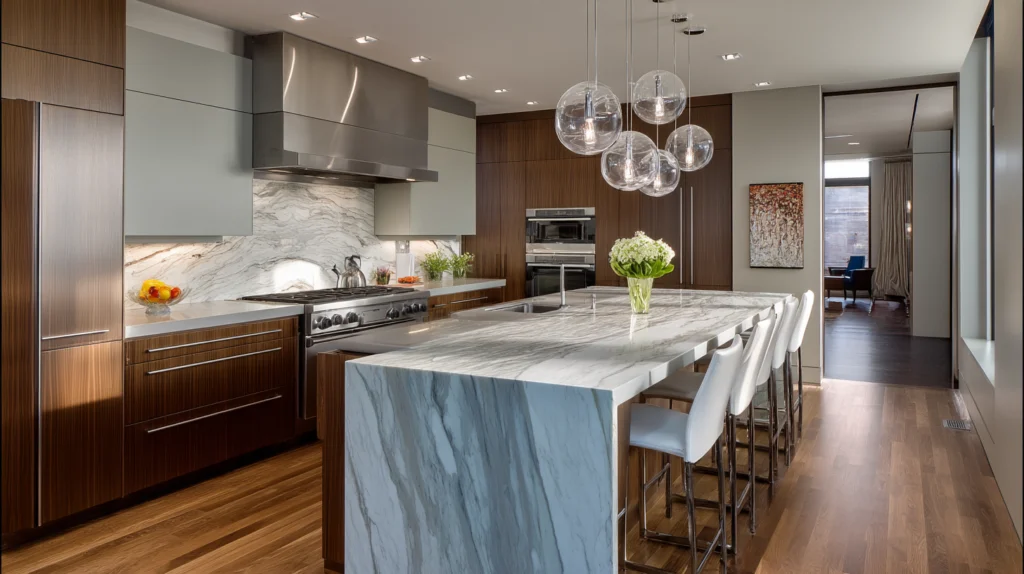
Prefab islands are factory-built and sold in standard sizes. They are the fastest and cheapest option. A simple cart with wheels can cost less than $500. Stationary prefab islands with cabinets and drawers cost more, often up to $2,500. The benefit is low price and fast delivery.
Prefab models are made with stock materials like laminate or engineered wood. They are not designed to last decades, but they are good for starter kitchens or rentals.
Pros of Prefab Islands
- Affordable upfront cost
- Fast to install
- Easy to replace or move
Cons of Prefab Islands
- Limited sizes and colors
- Lower durability compared to solid wood or stone
- No built-in plumbing or custom storage
Prefab islands work well for smaller kitchens where flexibility matters more than high-end style. They can even be paired with open shelving to maximize space.
Is a custom kitchen island worth the price?
A custom kitchen island usually costs $3,000 to $15,000+, but it delivers a perfect fit, premium look, and resale value.
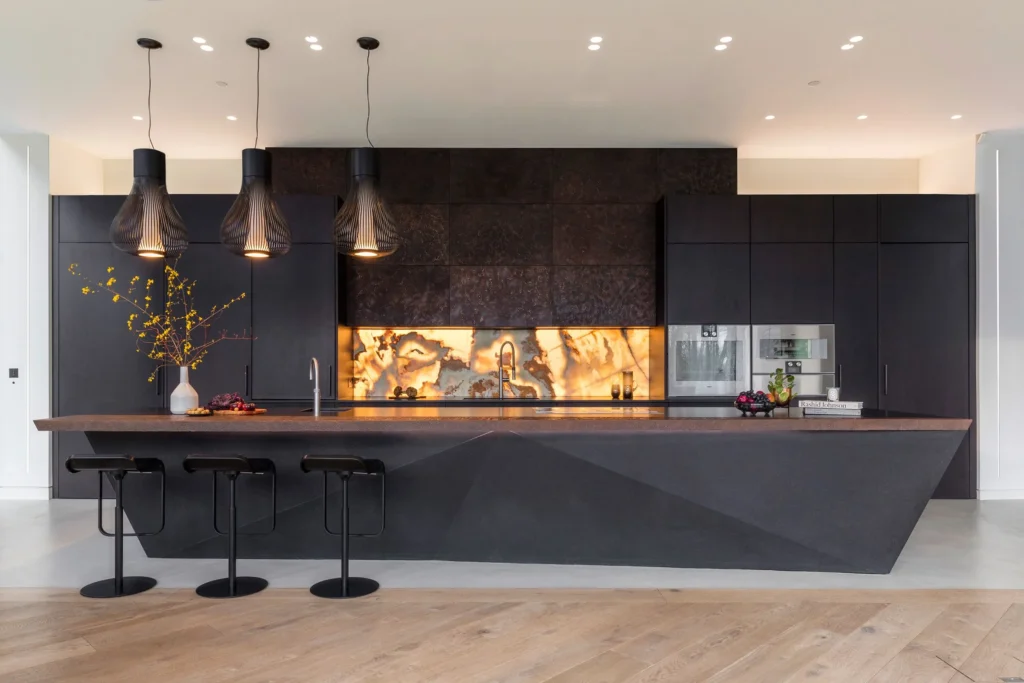
A custom kitchen island is built to order. It uses chosen dimensions, materials, and features. For many homeowners, it becomes the focal point of the kitchen.
Key Advantages
- Tailored to exact kitchen layout
- Wide choice of materials and finishes
- Can include sinks, cooktops, or storage
- Boosts home resale appeal
Key Downsides
- High upfront cost
- Longer installation time
- May need permits and inspections
A custom kitchen island is popular in open-plan kitchens. It connects living and cooking spaces, adds seating, and serves as a social hub. According to real estate studies, a well-designed kitchen island often raises property value.
If you plan to stay in the home for many years, the extra cost can be justified. If you plan to move soon, a mid-range island may be smarter.
What factors increase kitchen island costs the most?
The biggest cost drivers are size, material, features, and labor.
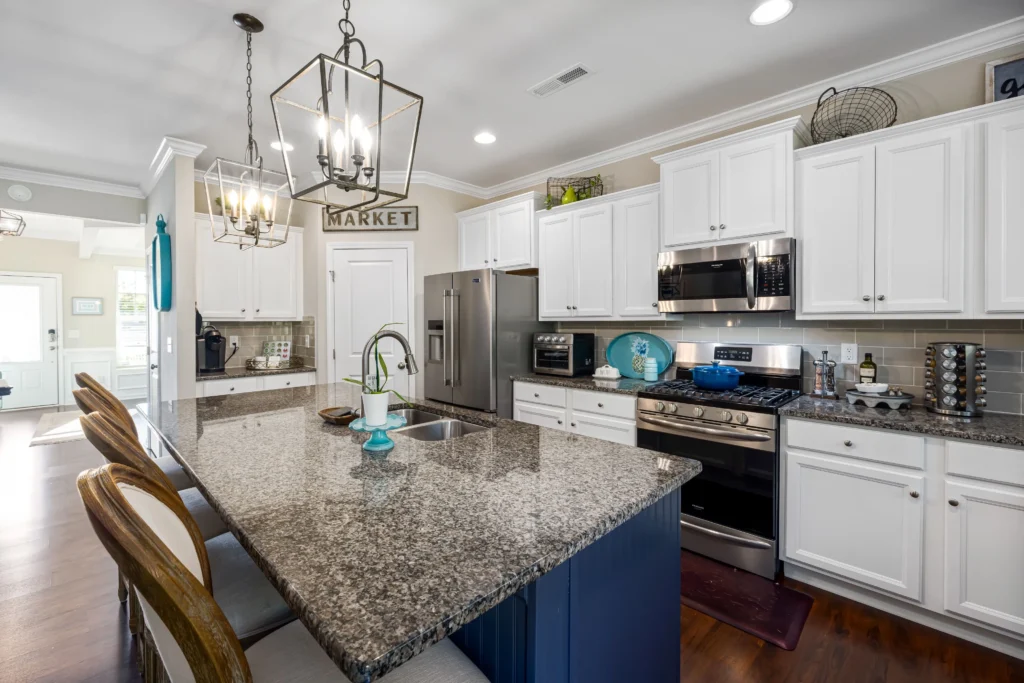
Kitchen island costs rise with every extra choice. A larger island means more square footage of countertop, more cabinetry, and more reinforcement. Expensive countertop materials like marble or quartz also raise costs. Adding sinks, cooktops, and dishwashers adds not only the appliance cost but also plumbing and electrical fees.
Labor is another major factor. Prefab models may need simple assembly. A custom kitchen island requires carpenters, plumbers, and electricians. Hourly rates can vary widely across cities. In places like New York City, delivery logistics and permits also raise final costs.
In summary, every decision — size, material, features, and labor — affects cost. Smart planning balances must-have functions with budget.
How do materials affect kitchen island pricing?
Materials can change the cost of a kitchen island from $20 per square foot to over $200.
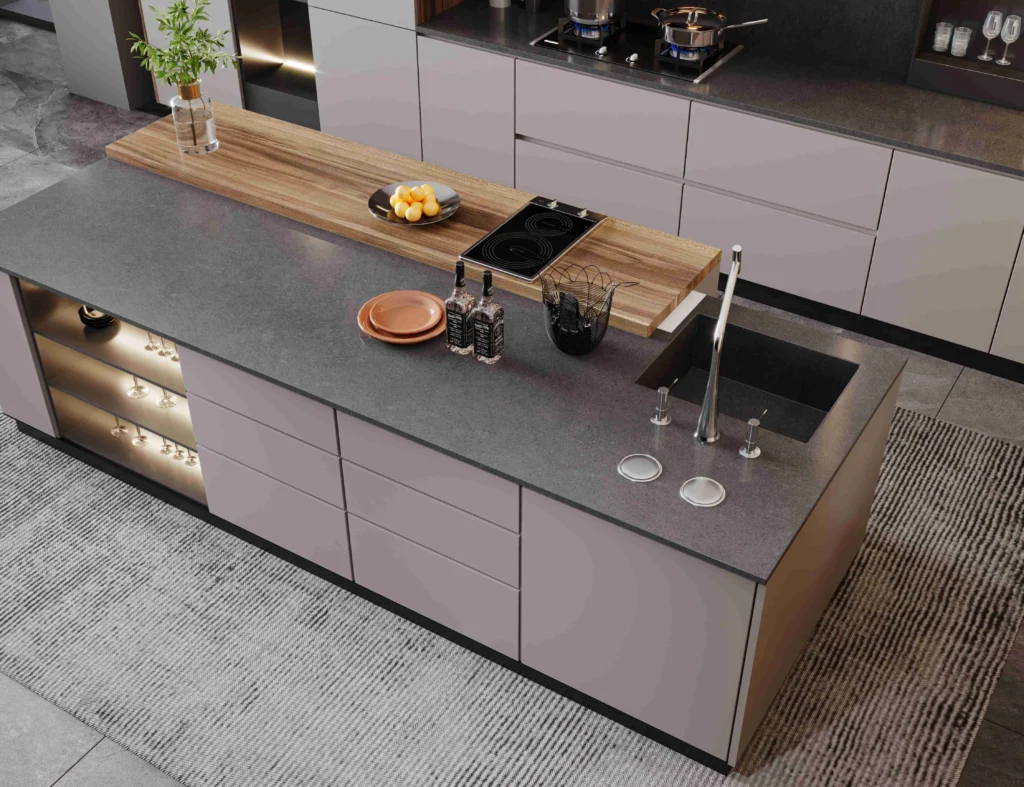
The countertop is often the most visible part of the island. It also makes up a large part of the price.
Common Countertop Materials and Prices
| Material | Average Cost per Sq. Ft. | Features |
| Laminate | $20–$50 | Cheap, light, easy to clean |
| Butcher Block | $40–$100 | Warm look, needs care |
| Granite | $50–$100 | Durable, premium look |
| Quartz | $60–$120 | Strong, low maintenance |
| Marble | $75–$200 | Elegant, high upkeep |
| Stainless Steel | $80–$150 | Modern, hygienic |
Cabinet material also affects cost. Stock plywood is cheaper than hardwood. Custom millwork adds value but costs more.
Flooring, lighting, and backsplash choices around the island also affect total spend. Homeowners should match materials with lifestyle needs. For example, quartz is stain resistant, while butcher block needs regular oiling.
How much does it cost to add plumbing to an island?
Adding a sink or dishwasher to a kitchen island can cost $2,500 to $5,000, including labor.
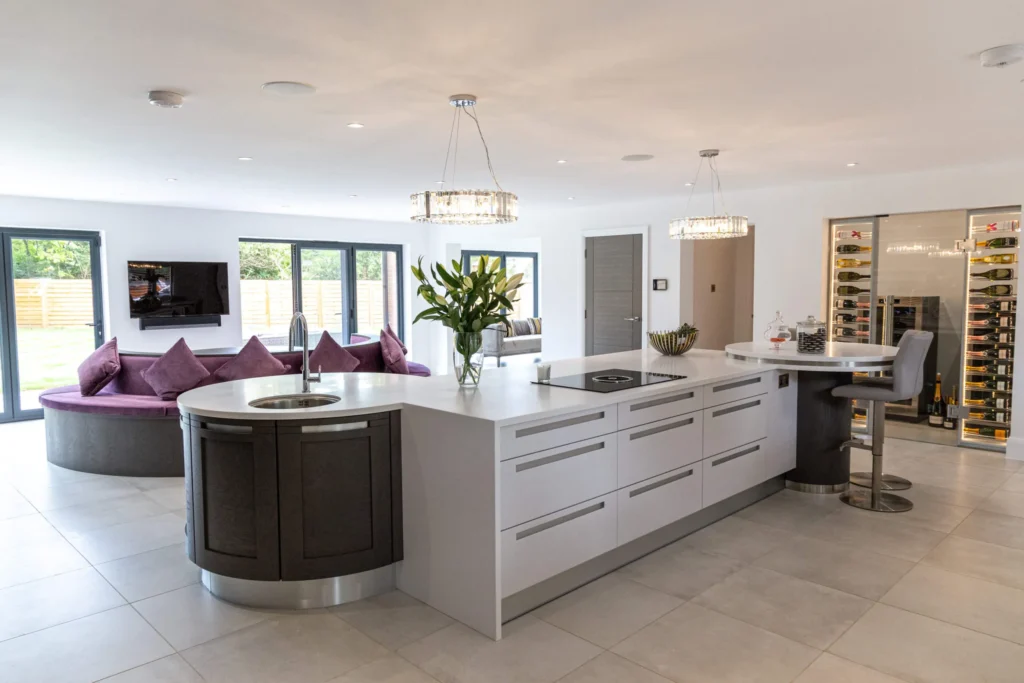
Plumbing is often the most expensive upgrade. It requires a plumber to run water supply and drain lines. It may also require cutting into the floor. This adds both labor and material costs.
Extra costs include faucets, sinks, garbage disposals, and permits. A faucet can cost $120 to $250. A sink can cost $400 to $1,500. Adding a dishwasher costs even more.
If your kitchen already has plumbing close by, costs may be lower. If you need new lines or venting, expect higher costs.
Can I install a kitchen island myself?
Yes, you can install a prefab or RTA kitchen island yourself if you have basic tools.
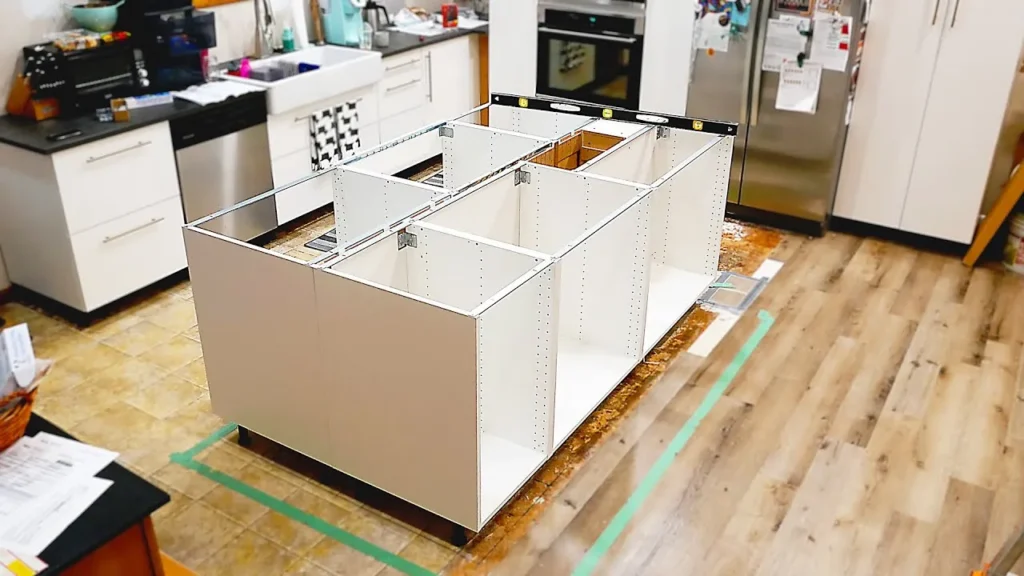
Do-it-yourself installation saves money on labor. Prefab islands and ready-to-assemble (RTA) cabinets are designed for this. Many homeowners can handle basic assembly with instructions.
However, tasks like adding a sink, wiring outlets, or installing heavy countertops need pros. Mistakes can cause leaks, electrical hazards, or damage.
DIY is best for small, simple islands. For a custom kitchen island, hire licensed pros to avoid costly mistakes.
Does a kitchen island increase home value in 2025?
Yes, kitchen islands are a top feature buyers look for in 2025.
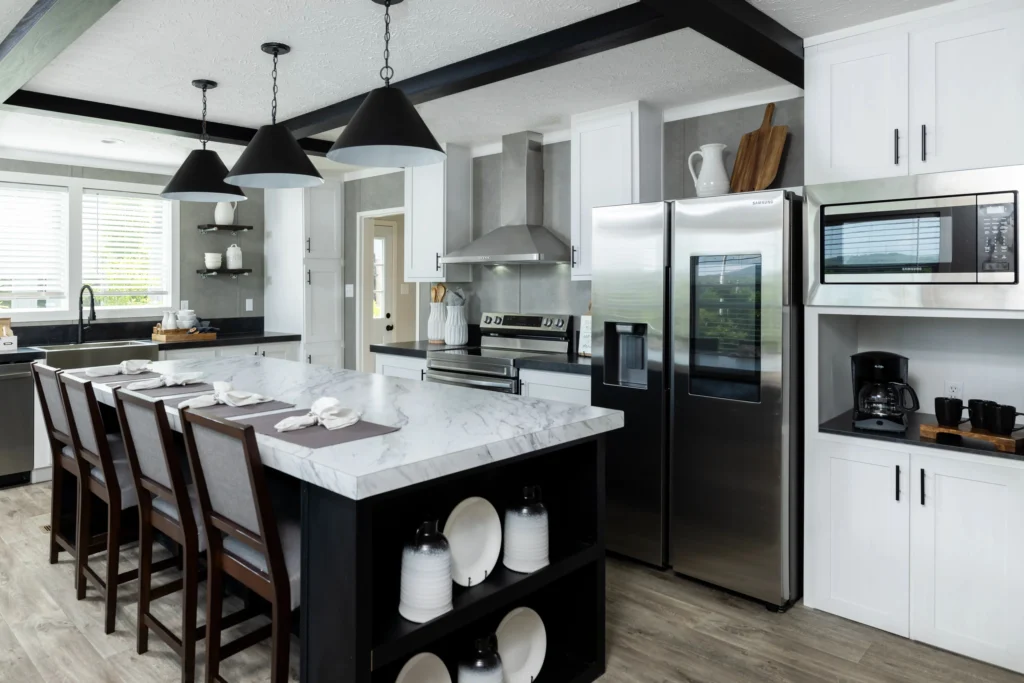
Kitchen islands increase workspace, storage, and seating. They also improve the look of open layouts. Real estate studies show homes with islands sell faster.
A custom kitchen island with stone countertops or built-in seating adds more value than small prefab carts. While you may not get back every dollar spent, the boost in market appeal is strong.
Conclusion
A custom kitchen island in 2025 can cost over $20,000, while prefab models start under $1,000.
Final CTA
If you plan a new build or remodel, share your floor plan. We can suggest layouts, materials, and a quick estimate for a full-house solution. Want to get started? Just send us your plan.
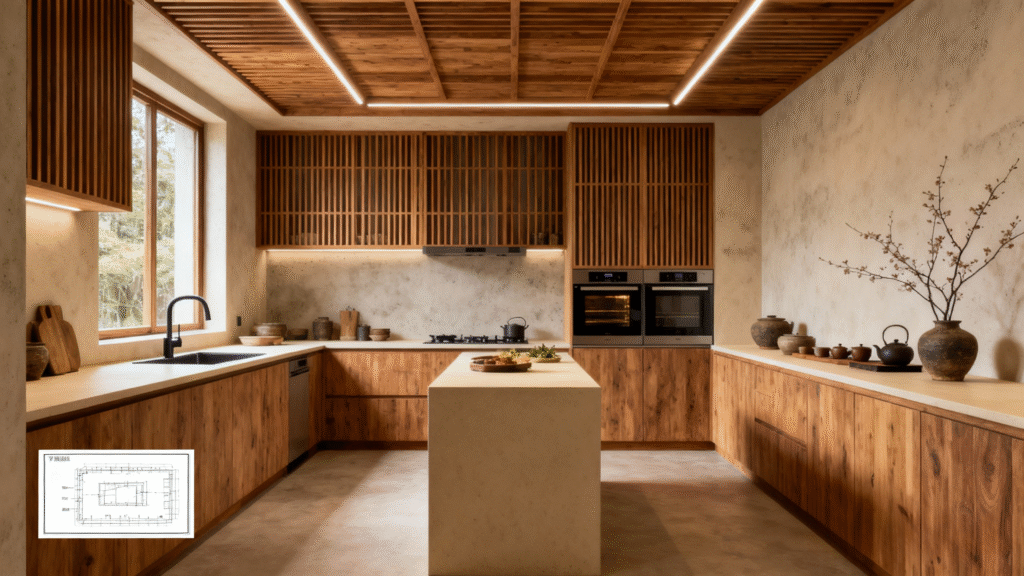
FAQ
How wide should a kitchen island be?
Most kitchen islands are 2 to 4 feet wide. Wider designs need more space around for walkways.
Do kitchen islands need electrical outlets?
Yes, most building codes require outlets. National codes say islands larger than 24×12 inches need at least one.
What is the best height for a kitchen island?
Standard height is 36 inches for prep and 42 inches for seating. These match counter stools or bar stools.
Can you add seating to a small kitchen island?
Yes, if you allow a 12-inch overhang for legroom. Even a small island can seat two.
What permits are needed for a kitchen island?
Prefab islands often need no permits. A custom kitchen island with plumbing or electrical work usually requires local permits.
What is the cheapest way to get a kitchen island?
The cheapest option is a rolling cart or prefab model. These start around $150 and need no major labor.
How long does a kitchen island project take?
Prefab models take a few hours. Custom builds can take weeks, especially if plumbing and inspections are required.

